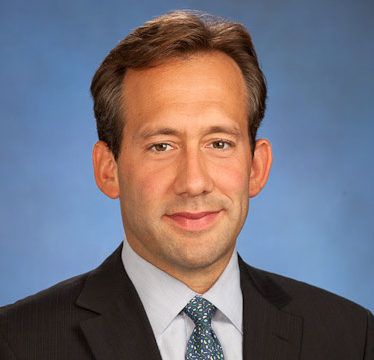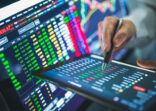Gary Chropuvka, Goldman Sachs Asset Management
Rather than relying purely on data, the quantitative investment strategies (QIS) team uses it in conjunction with fundamental analysis, in what Chropuvka, co-head of the QIS team, calls a “funditative” or “quantimental” approach.
AI allows the team to go beyond analysis of structured data such as company balance sheets, which have been an inherent part of quantitative investing for many years, Chropuvka said.
The team seeks data that shows “what is going on around the company, what is the sentiment, what are the themes and trends related to it”.
Examples of such data include web traffic to sites of e-commerce companies, patent filings and references to other companies’ patents. Geo-location and satellite data help analyse regional economies on a highly granular level, by using, for example, images of retail parking lots or records of hotel occupancy.
But the firm does not use social media content as data. “We have not found it intuitive,” Chropuvka said. “It has a lot of noise to it and there is less objectivity to it.”
The team uses machine learning to train their systems to read and analyse quarterly earnings reports and management disclosures, as well as analyst research reports.
“We get about 4,000 reports a day,” Chropuvka said. “We’re training computers to read how sell-side researchers change their opinions. We also look at what workers are saying about their companies.”
AI helps GSAM to identify themes and trends in news, as well as companies associated with them. Chropuvka compares this process to the way Netflix uses AI to analyse viewing patterns of their users to suggest more films they may like.
The human role
The team’s investment universe for all equity long-only quant strategies covers 13,000 companies globally, including emerging markets.
While data analysis lies at the core of the investment process, Chropuvka stresses that human judgment is an integral part of it at every step. Rather than relying on data to detect factors that have generated returns in the past (“data mining”), the starting point of the process is an “economically intuitive” idea that makes sense to the team and has a potential to predict future returns.
For example, it is economically intuitive that a change in the number of daily visits to an online retailer’s website will have an impact on its sales and profitability.
The 27-person team sources such ideas from academic research, from data vendors, from interactions with other divisions of the firm and even TV news.
Once an idea passes the economic intuition test and is chosen by the team’s two co-heads for further vetting, the analysis focuses on confirming its viability as a trigger for returns across markets, timelines and relevant sectors, based on historical data.
However, an increase in visits to a company’s website may be reflected in its sales and subsequently in its stock price only after some time has passed. “There is a time when we have information in that signal that is not yet reflected in prices,” Chropuvka said. “That’s critical for success.”
The target holding period in the firm’s quant strategies is between six months and one year, so the optimal period for information to be reflected in prices is between six and nine months, Chropuvka said.
The portfolio managers aim to hold around 20% of the names in the underlying benchmark. The funds are managed with a target deviation from the benchmarks between 2.5% and 5%. While occasional macro views are implemented, they constitute less than 10% of the overall risk budget. Rather than betting on geopolitical and macroeconomic events, such as Brexit, the team attempts to immunize the portfolios against them, so that any outcome would have a negligible effect.
Not all signals that the team adopts work out, Chropuvka admits. The most common risk is crowding, when other market participants identify the same factor and its predictive effectiveness disappears.
As the strategies are managed to within a specified deviation from an index, market moves remain a risk for investors. “We try to take a very diversified approach to limit the amount of drawdown risk that we may have relative to the benchmark,” Chropuvka said.

















